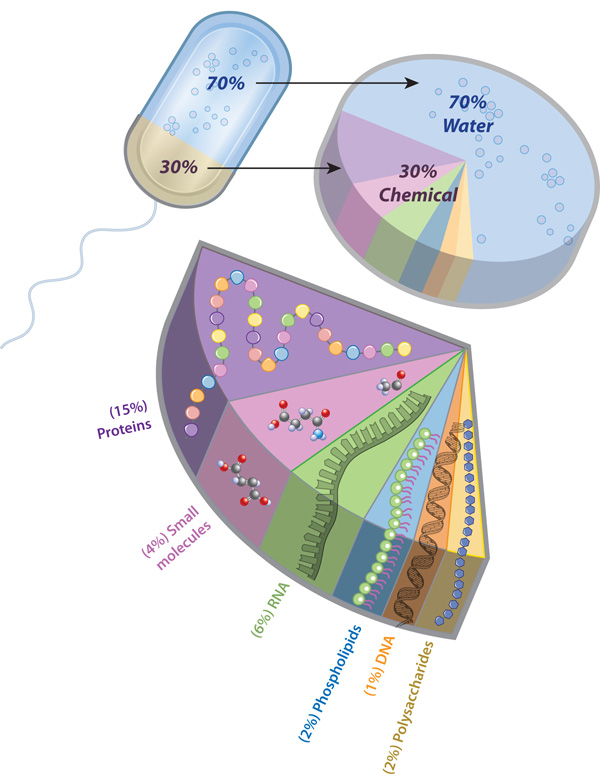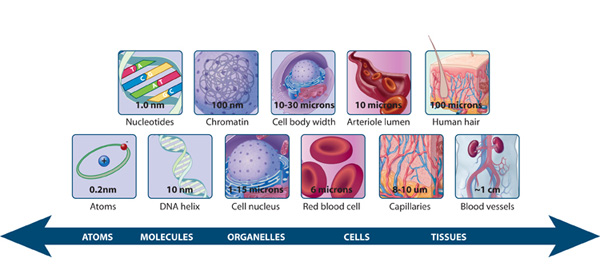What Contains Genetic Material in a Animal Cell
As previously mentioned, a cell's cytoplasm is home to numerous functional and structural elements. These elements exist in the form of molecules and organelles — picture them as the tools, appliances, and inner rooms of the cell. Major classes of intracellular organic molecules include nucleic acids, proteins, carbohydrates, and lipids, all of which are essential to the cell's functions.
Nucleic acids are the molecules that contain and help express a cell's genetic code. There are two major classes of nucleic acids: deoxyribonucleic acid (DNA) and ribonucleic acid (RNA). DNA is the molecule that contains all of the information required to build and maintain the cell; RNA has several roles associated with expression of the information stored in DNA. Of course, nucleic acids alone aren't responsible for the preservation and expression of genetic material: Cells also use proteins to help replicate the genome and accomplish the profound structural changes that underlie cell division.
Proteins are a second type of intracellular organic molecule. These substances are made from chains of smaller molecules called amino acids, and they serve a variety of functions in the cell, both catalytic and structural. For example, proteins called enzymes convert cellular molecules (whether proteins, carbohydrates, lipids, or nucleic acids) into other forms that might help a cell meet its energy needs, build support structures, or pump out wastes.
Carbohydrates, the starches and sugars in cells, are another important type of organic molecule. Simple carbohydrates are used for the cell's immediate energy demands, whereas complex carbohydrates serve as intracellular energy stores. Complex carbohydrates are also found on a cell's surface, where they play a crucial role in cell recognition.
Finally, lipids or fat molecules are components of cell membranes — both the plasma membrane and various intracellular membranes. They are also involved in energy storage, as well as relaying signals within cells and from the bloodstream to a cell's interior (Figure 2).
Some cells also feature orderly arrangements of molecules called organelles. Similar to the rooms in a house, these structures are partitioned off from the rest of a cell's interior by their own intracellular membrane. Organelles contain highly technical equipment required for specific jobs within the cell. One example is the mitochondrion — commonly known as the cell's "power plant" — which is the organelle that holds and maintains the machinery involved in energy-producing chemical reactions (Figure 3).

Figure 2: The composition of a bacterial cell
Most of a cell is water (70%). The remaining 30% contains varying proportions of structural and functional molecules.

Figure 3: The relative scale of biological molecules and structures
Cells can vary between 1 micrometer (μm) and hundreds of micrometers in diameter. Within a cell, a DNA double helix is approximately 10 nanometers (nm) wide, whereas the cellular organelle called a nucleus that encloses this DNA can be approximately 1000 times bigger (about 10 μm). See how cells compare along a relative scale axis with other molecules, tissues, and biological structures (blue arrow at bottom). Note that a micrometer (μm) is also known as a micron.
What Contains Genetic Material in a Animal Cell
Source: https://www.nature.com/scitable/topicpage/what-is-a-cell-14023083/

0 Response to "What Contains Genetic Material in a Animal Cell"
Post a Comment